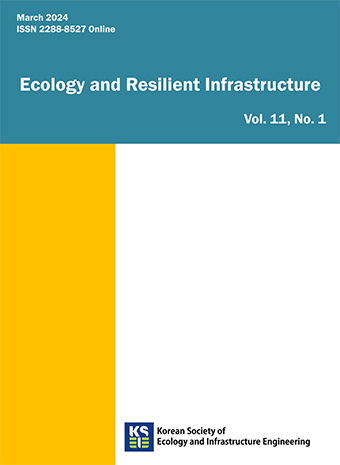Review Article
Abstract
References
Information
Choi, S.-U., Yoon, B. M., Woo, H. and Cho, K.-H. 2004. Effect of flow-regime change due to damming on the river morphology and vegetation cover in the downstream river reach: a case of Hapchon Dam on the Hwang River. Journal of Korea Water Resources Association 37(1). pp. 55-66. (in Korean)
10.3741/JKWRA.2004.37.1.055Choi, S.-U., Yoon, B. M., Woo, H. and Cho, K.-H. 2004. Effect of flow-regime change due to damming on the river morphology and vegetation cover in the downstream river reach: a case of Hapchon Dam on the Hwang River. Journal of Korea Water Resources Association 37(1). pp. 55-66. (in Korean)
10.3741/JKWRA.2004.37.1.055- Publisher :Korean Society of Ecology and Infrastructure Engineering
- Publisher(Ko) :응용생태공학회
- Journal Title :Ecology and Resilient Infrastructure
- Journal Title(Ko) :응용생태공학회 논문집
- Volume : 6
- No :2
- Pages :89-100
- Received Date : 2019-06-05
- Revised Date : 2019-06-19
- Accepted Date : 2019-06-19
- DOI :https://doi.org/10.17820/eri.2019.6.2.089




 Ecology and Resilient Infrastructure
Ecology and Resilient Infrastructure







